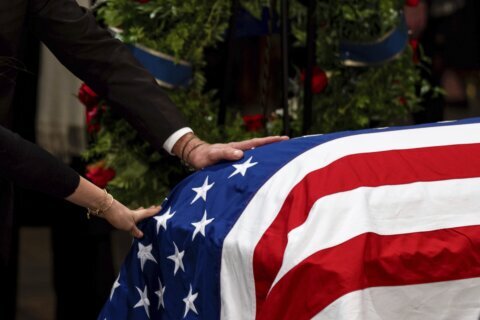WASHINGTON — Travelers returning from holiday weekend getaways Sunday found themselves stuck in stop-and-go traffic for hours, and it was some of the worst traffic WTOP’s Director of Traffic and Transit Operations has ever seen.
“I’ve been doing this traffic now for over 30 years and it was probably one of the worst days I’ve ever seen [Sunday] and it was bizarre,” WTOP’s Jim Battagliese said on WTOP Monday.
Beach routes, such as Interstate 95 in Virginia and U.S. 50 in Maryland, had continuous traffic jams. Backups were reported on westbound U.S. 50 most of the day. They cleared around 11:45 p.m. Sunday, but the traffic jam extended up to 10 miles at times.
Traffic started at 10 a.m. on some routes and didn’t ease up until midnight.
A crash early in the afternoon on the eastern span of the Chesapeake Bay Bridge brought all traffic on the Western Shore to a stop for about 15 minutes and exacerbated westbound delays.
In Virginia, congestion developed by late morning on northbound Interstate 95 North. By 11 p.m., there was a 28-mile backup before Va. 606 at Thornburg that took until nearly 1 a.m. to clear. Numerous other slowdowns developed throughout Stafford and Prince William counties as well.
It was even worse in the afternoon: Northbound traffic was at a standstill on U.S. 301 with nearly 8 miles of stop-and-go traffic leading to the Gov. Harry Nice Bridge. The highway is a well-known alternative to the clogged lanes of I-95.
Interstate 70 eastbound also was a slow drive between Hagerstown and Frederick, Maryland. Traffic on I-70 East and I-270 South is typically heavy in Frederick County on the Sundays following federal holidays.
Because July 4 fell on a weekend, more people may have taken a long weekend and decided to return home at the same time, contributing to the delays.
But whether it is a holiday weekend or just a heavily-traveled summer weekend, Battagliese has some tips to avoid getting stuck in traffic when coming home:
- Try to leave Monday. Take off at 5 a.m. or 6 a.m. Monday morning to head into the region and then go right into school or work.
- Take shortcuts. Avoid main routes such as I-95 during big travel weekends. Instead, head west and opt for routes such as Interstate 64, U.S. Route 17 or Virginia Route 3.
- Have options. Before you hit the road, map out some alternate routes so if traffic is bad, you can jump off and keep moving.
In Virginia, “Route 1 is not a good option,” Battagliese notes, “because that’s where everyone goes.”
Instead, he suggests U.S. Route 15 or U.S. Route 29.
WTOP’s Dave Dildine contribute to this report. Follow @WTOPtraffic and @WTOP on Twitter.







